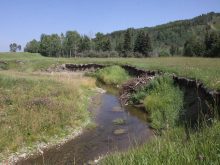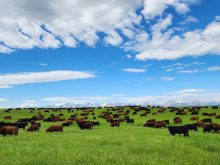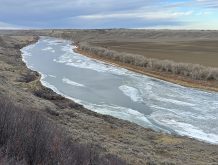Cattle industry lobbies for ‘beaver dam approach’ to storing water for irrigation projects, flood mitigation in watersheds
Beef producers in British Columbia who will receive help under a $71-million AgriRecovery program following record wildfires and drought want long-term solutions to what is becoming an increasing problem because of climate change.
Major discussions are being held with provincial officials about how to improve water management, said Kevin Boon, general manager of the B.C. Cattlemen’s Association.
Related stories on this issue:
- Cattle producers count losses
- Struggling B.C. ranchers desperately need feed
- B.C. ranchers receive fire assistance
- B.C. floods shine spotlight on AgriRecovery
Read Also

Growth plates are instrumental in shaping a horse’s life
Young horse training plans and workloads must match their skeletal development. Failing to plan around growth plates can create lifelong physical problems.
“And we’ve definitely got the government’s attention right now … we’re going to see, I think, an investment in infrastructure on water storage and stuff,” he said.
It will focus on a variety of measures, including what Boon called a beaver dam approach involving smaller infrastructure that can be used for irrigation as well as wildfires and flood mitigation in watersheds. The association has been pushing for action on the problem for about 14 years, he said.
How to better manage water once it’s on the ground is a problem that provinces across Western Canada are facing, said Boon.
“And if they’re not thinking about it now, I would say they very much need to.”
B.C. premier David Eby and his cabinet are taking it “extremely seriously,” said Boon. It includes looking at the stocking rates of not only cattle, but also “how many trees are out there and how we manage the landscape, so there’s a lot of discussion on how we manage our watersheds and what that landscape is going to look like in the future.”
Boon cautioned it will likely take years to develop, approve and implement a plan for B.C., including getting federal officials on board.
“The easiest fix is going to be (more precipitation) coming out of the sky for now, but there’s this realization that we can’t continue to just depend on nature, and that we have to really concentrate on management of our water resources for both firefighting and for the use of hay and forage production.”
The federal government announced Oct. 20 it will provide up to $71 million for farmers and ranchers under the 2023 Canada-British Columbia Wildfire and Drought AgriRecovery Initiative. It will cover up to 70 percent of certain extraordinary expenses, including the following:
- Livestock feed due to decreased pasture availability and transportation costs related to moving livestock to feed and water.
- Reseeding and reestablishing forage crops damaged by wildfires, along with labour costs to repair fences.
- Repairs or replacement of critical irrigation infrastructure damaged by wildfires not covered by insurance.
- Livestock veterinarian and transportation costs supporting animal health and safety.
- Replacing bee colonies, apiaries and beekeeping equipment lost to wildfires.
The program will also provide up to $160 per animal for extraordinary replacement costs in situations where producers downsized their breeding stock, said a federal statement. It will also pay up to $80 per head to re-establish safe winter-feeding facilities and general cleanup, it said.
Beef producers have never experienced the magnitude of the fire seasons that have occurred in 2017, 2018, 2021 and 2023, which are the four largest in B.C.’s history. Ranchers are still replacing about 1,500 kilometres of fences destroyed in 2021 even as they deal with the consequences of this year’s record-breaking fire season.
B.C. has been facing dry conditions since June 2022, with many watersheds at drought level 4 or 5 during the summer and into the fall. Five is the highest level and marks the point when creeks are running dry.
Producers who raise forage have faced shutdowns in irrigation, said Boon during an interview Sept. 14. Some areas lost the third and final cut of the hay needed to get cattle through the winter, he said.
Vancouver Island and the northern half of the province were particularly hard hit and will likely experience herd reductions of about 40 percent in some areas, followed by cuts elsewhere in the province, said Boon on Oct. 25.
“We’re estimating that we’ll see a total herd reduction of somewhere in that 25 percent range on our breeding stock here.”
This year’s AgriRecovery program is substantially different from a $20 million program launched in 2021, said Boon. The province has been split this year into several regions in terms of how producers are assessed for things such as feed, he said.
“It’s really built around the lack of pasture rather than the lack of hay… and I think it will be sufficient to help the guys save some of the cows and retain some of the herd. The difficulty in that is we still haven’t seen the moisture yet to ensure that we’re going to have a spring (season).”
Two areas that will receive more compensation are Vancouver Island and the Highway 16 corridor from about Prince Rupert to Smithers, said Boon. They’ll be assessed on an allotment of about two tonnes per head compared to about one tonne for the rest of the province, he said.
“And the amount is based on what the cost of hay is for replacement in those areas, so in areas where there’s more transportation, they’ll get more compensation per tonne of hay than others. It’s a little more complicated than what we’ve seen in the past assessment, so we’re still digesting … exactly what it’s going to mean to everybody yet.”
















